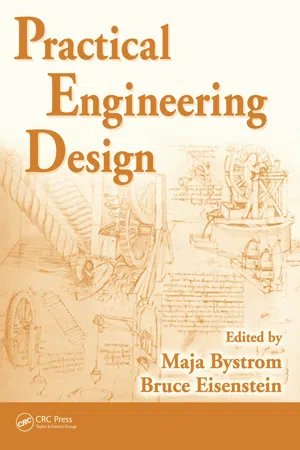Law
US Intellectual Property
US intellectual property refers to the legal rights that protect creations of the mind, such as inventions, literary and artistic works, and symbols, names, and images used in commerce. It encompasses patents, trademarks, copyrights, and trade secrets, providing creators and innovators with exclusive rights to their work and incentivizing innovation and creativity.
Written by Perlego with AI-assistance
8 Key excerpts on "US Intellectual Property"
Learn about this page
Index pages curate the most relevant extracts from our library of academic textbooks. They’ve been created using an in-house natural language model (NLM), each adding context and meaning to key research topics.
- eBook - ePub
- Eduardo Navas, Owen Gallagher, xtine burrough, Eduardo Navas, Owen Gallagher, xtine burrough(Authors)
- 2017(Publication Date)
- Routledge(Publisher)
This is to say: intellectual property is none of those things. Rather, copyrights, trademarks, patents, and trade secrets are a set of legally regulated social relations. More practically, intellectual property can be conceived of as a set of legal mechanisms that grant particular rights for creations of the mind. U.S. Court of Appeals Judge Richard Posner and economist William Landes further define intellectual property as ideas, inventions, discoveries, symbols, images, expressive works (verbal, visual, musical, theatrical), or in short any potentially valuable human product (broadly, “information”) that has an existence separable from a unique physical embodiment, whether or not the product has actually been “propertized,” that is, brought under a legal regime of property rights. 1 Although Landes and Posner do not link intellectual property with corresponding legal rights per se, for our purposes, it is worth unpacking just how “property” functions here. In order to do that, we must visit the origins of the concept of intellectual property, as it is documented in the United States Constitution. Clause 8 of Article I, Section 8 of the U.S. Constitution grants Congress the power “To promote the Progress of Science and useful Arts, by securing for limited Times to Authors and Inventors the exclusive Right to their respective Writings and Discoveries.” 2 While it does not mention them explicitly, this clause is generally understood as the origin of copyright and patent law in the United States. The purpose of the clause the Framers had in mind was twofold. On the one hand, it would provide the citizenry with an incentive to create and innovate. With the legally backed assurance that they could exclusively exploit (for financial gain) what they made, creators would be motivated to write books, or develop technologies. We might think of this incentive as the clause’s “short-term” goal - eBook - ePub
- Mat Callahan, Jim Rogers, Mat Callahan, Jim Rogers(Authors)
- 2017(Publication Date)
- Zed Books(Publisher)
This chapter is structured as follows. First, it provides a brief overview of the characteristics of intellectual property, highlighting the protection–dissemination paradox that lies at its heart. The second section outlines the politics that drive IP policy. The third presents an argument for analyzing IP laws as public policy, through an empirically based economic lens that emphasizes IP’s role in promoting a socially optimal level of knowledge and cultural creation. It then applies this framework to the case of Aaron Swartz’s prosecution for hacking the JSTOR academic journal article database at MIT as an example. The chapter then offers some guidelines for how we can cut through the legal thicket and moral arguments, and engage in a productive dialogue on how to reform the laws that govern something so fundamental as knowledge itself. It concludes with some final thoughts.Most of this chapter is focused on the US Intellectual Property debate because it is the driving force behind global IP reform. While all countries face similar issues, their experiences, and their IP politics, are all somewhat different. That said, the principles developed in this chapter are generally applicable.What is intellectual property?Intellectual property is the currently dominant form of regulation governing the creation and use of knowledge. While it originated in Europe, IP law has spread to become the dominant way that we regulate knowledge worldwide. Roughly speaking, the three main categories of IP are copyright (creative works such as books, music and film, but also computer software and things like hull designs), patents (industrial processes, such as drug formulas and Amazon’s one-click shopping) and trademarks (identifying marks, such as McDonald’s Golden Arches, but also the phrase “Let’s get ready to rumble”).4 Intellectual property is designed to commodify abstract works so that they can be bought and sold in a market economy.Intellectual property is a state-created form of protection that provides IP owners with limited rights to determine how this knowledge may be used, including the right to buy or sell the IP. It commodifies knowledge. These rights, or privileges, allow for things such as music and drug formulas to be bought and sold, and limit the ability of others to use, or copy, these otherwise abstract ideas. In a market economy, the concern is that because it often takes a great deal of time and resources to come up with an idea, but it is relatively trivial to copy it, without some form of protection, there will be a suboptimal level of creation and invention. Consequently, intellectual property is designed to provide creators with certain rights that will allow them (potentially) to profit from their creation. - eBook - ePub
- Maja Bystrom, Maja Bystrom, Bruce Eisenstein(Authors)
- 2017(Publication Date)
- CRC Press(Publisher)
Intellectual property (IP), as differentiated from tangible or real property, refers to creations of the mind. IP rights are provided to the creators of IP to give them a right of limited duration (that is, a limited monopoly) to exclude others from making, using, or selling their creations. In most cases, this limited monopoly is provided in exchange for publicly disclosing their creation and allowing the creation to be made, used, or sold by anyone at the end of the limited monopoly. Publicly disclosing the creation also allows others to create and develop based, in part, on the publicly disclosed creation. IP rights relate to “inventions, literary and artistic works, symbols, names, images, and designs used in commerce” (World Intellectual Property Organization) and allow creators to reveal (or, in the case of trade secrets, to not reveal) their ideas and work, while affording them the opportunity to protect that work from others.Generally, there are four types of intellectual property: trade secrets, patents, copyrights, and trademarks. A trade secret may be any concrete information (including customer lists, formulas, compilations of information or data, programs, devices, and processes) that is maintained in secret, thus allowing the owner to be the sole user of the information. A classic example of a trade secret is the formula for Coke. Patent laws protect new, useful, and nonobvious discoveries, that is, inventions. Copyright law protects original works of authorship fixed in any tangible medium of expression, such as books, computer code, and paintings. Trademarks and service marks protect marks that distinguish one manufacturer’s, merchant’s, or service provider’s goods or services (for instance, a name or emblem that represents a company or product) from those of others. Below is a discussion of each of these types of IP and what they might mean for you in terms of a design project.* - eBook - ePub
Cyber Law and Ethics
Regulation of the Connected World
- Mark Grabowski, Eric P. Robinson(Authors)
- 2021(Publication Date)
- Routledge(Publisher)
Creating a system of intellectual property (IP) protection was actually deemed so important to the development of a strong, healthy society and economy that it was specifically included in the United States Constitution. In order “to promote the Progress of Science and useful Arts,” Article 1, Section 8, Clause 8 of the Constitution provides that the government can enact laws that “secur[e] for limited times to Authors and Inventors the exclusive Right to their respective Writings and Discoveries.” Copyright and patent law are federal laws; states do not have their own separate laws. Trademarks are also primarily a matter of federal law, but states also have their own laws that give more limited protections within their borders.At its core, IP law is about encouraging cultural, technological and economic progress. The framers of the Constitution believed that a society can only flourish where there is a steady advancement in its arts, sciences and literature. To bring about such advancement, IP law — in its most ideal form — tries to balance two sometimes competing interests.On one hand, IP law recognizes that it is important that artists, authors, filmmakers and other “creators” be recognized and fairly compensated for their work. Most writers would be unwilling — and financially unable — to devote many years working on the next “Great American Novel” or the next Hollywood blockbuster if, once they were done, anyone could download their work, make copies and sell their bootlegged version to others on the Internet. IP law promises authors that their investment of time, energy and resources will be protected and ensures that a robust collection of original works is available for public enjoyment and benefit.On the other hand, IP law recognizes that encouraging people to create new works will provide little benefit to society as a whole if others are not permitted to discuss and learn from them. For example, a system that requires bloggers or others to compensate or seek permission from a scientist or historian before they can talk about or critique their work would be unduly burdensome and stifle progress. Advancing the arts and sciences requires a system that allows others to share information and to learn from and build on the work of others. - eBook - ePub
Avoid Legal Pitfalls for Small Businesses
An essential reference guide to law and litigation for SMEs
- Bevans Solicitors(Author)
- 2012(Publication Date)
- Teach Yourself(Publisher)
3Intellectual property explained
In this chapter you will learn about:- the different types of intellectual property rights
- how such rights may be infringed and defences and remedies for infringement.
Introduction
The value of intellectual property (IP ) can be underestimated and, if not protected properly, it may put your business at risk. A basic understanding of the law will allow you to understand the mechanisms that allow you to protect what you create, maximize your competitive position and avoid infringing the IP rights of other people and businesses.In this chapter, we will provide an introduction to trade marks, copyright and patents; how these rights might be found to infringe others’ rights or how they might be infringing your rights; and defences and remedies to infringement.Types of intellectual property rights
IP rights fall into two general categories:- Registered rights – granted on application to the UK Intellectual Property Office. However, even if granted, their validity can be challenged. Registered rights are monopoly rights, which means that, once registered, the owner can stop others from using the right without permission. Registered rights include patents, trade marks and registered designs.
- Unregistered rights – these arise automatically, give protection against copying or using the right, and include copyright, unregistered design rights, rights in unregistered trade marks and confidential information.
Patents
WHAT IS PROTECTED? Patents protect most industrially applicable processes and devices, including:- mechanical devices (e.g. a vacuum cleaner)
- methods for doing things (e.g. a method for printing textiles)
- chemical compounds (e.g. a new cleaning product)
- mixtures of compounds (e.g. an improved perfume).
- eBook - ePub
Intellectual Property Asset Management
How to identify, protect, manage and exploit intellectual property within the business environment
- Claire Howell, David Bainbridge(Authors)
- 2014(Publication Date)
- Routledge(Publisher)
Without knowing how to value IP you will not know how much yours is worth, how much can be obtained from it by licensing or by assignment. You will not know how much someone else’s IP is worth if you are thinking of taking rights in or under it. If you are acquiring an existing business, you will not know how much it is worth overall if you are not able to value the IPR owned by the business or licensed by it.If you do not manage your IP effectively, you might forget to renew any registrations, which could mean that you lose them.If you do not have a reasonable grasp of IP, you might commit criminal offences by dealing with counterfeit articles even if you do not have actual knowledge of their status. You may commit offences under patent law if you ignore the secrecy provisions or submit an application to a foreign country before the UK patent office has seen the specification for the invention.Summary Intellectual property rights protect all manner of things, from original literary and artistic works and new, industrially applicable inventions to trading names and logos.There are several forms of IPR. Some are very different from others. Some come into being automatically, such as copyright, while others must be acquired through formal applications for registration, such as patents and registered designs.Some IPR, particularly those subject to registration, provide the owner with a monopoly in the subject matter of the right, such as in the case of a patent. Other rights require that the defendant has made some use of the protected work, such as by making copies of a photograph.Some things can be protected by more than one IP right. For example, drawings of a new product will be protected by copyright, the product itself may be patented and the shape or appearance protected by registered and unregistered design rights and a trade mark may be applied to copies of the product made for sale. Before the product is patented, it is essential that details of it are kept confidential, otherwise the product’s novelty could be prejudiced. - eBook - ePub
- Janice Denoncourt(Author)
- 2015(Publication Date)
- Routledge(Publisher)
1General Themes in Intellectual Property LawEssay-style questions are commonly used to invite the student to discuss a variety of themes in intellectual property (IP) law. We are surrounded in our everyday lives by intellectual property, but defining or describing it is no easy feat. The range of matter which falls within the scope of intellectual property is diverse and extensive.Examples of things that can be protected by intellectual property include inventions, novels, works of art, photographs, musical scores, sound recordings, films, computer software, bio-engineered living organisms, trade secrets, know-how, invented characters and brand names. Examiners often set questions relating to the rationales or traditional justifications for the existence of IP protection.Another theme running through IP law is that the systems are constantly adapting, whether in response to advances in technology or as a result of shifting perceptions about the appropriate reach of IP protection. In general, the subject matter that may be protected by IP law regimes is increasing as new innovations are created which are deserving of property rights. The statutes that mainly govern IP law include the Copyright, Designs and Patents Act 1988 , the Registered Designs Act 1949 , the Patents Act 1977 and the Trade Marks Act 1994 . Case law helps to clarify how the law is applied. The Intellectual Property Act 2014 - eBook - ePub
- Kurt Saunders(Author)
- 2021(Publication Date)
- Routledge(Publisher)
3 Intellectual property protection and preemptionTraditional bodies of intellectual property law do not protect undeveloped ideas. This is true under U.S. intellectual property law as well as the laws of other countries that are members of the World Trade Organization (WTO) and therefore subject to the Trade-Related Aspects of Intellectual Property Agreement (TRIPS Agreement), a comprehensive multilateral agreement on intellectual property.1 Neither copyright law nor patent law protects abstract ideas, regardless of how original or novel they may be. Trademark law protects branding ideas only to the extent they are commercially used and known to consumers as indicators of source. Alternatively, an idea might be maintained as a trade secret, but it must be economically valuable and be unknown to and not easily discoverable by competitors.Where an idea has been expressly delineated or applied to solve a specific problem, claims based on state law idea protection theories will be preempted or superseded by copyright or patent law. Preemption of state law by federal law arises under the Supremacy clause of the U.S. Constitution or because of preemption provisions in federal statutes. To the extent that a claim for idea theft is equivalent to any of the exclusive rights of copyright or comes within the subject matter of patent law, it will be preempted by those federal laws. In such cases, the plaintiff must rely on copyright or patent law as the basis for his or her claim if the requirements for copyright or patent protection are met. Finally, if an idea qualifies for trade secret protection, certain tort claims are preempted.Patent law
Patents protect applied technological inventions. The U.S. Constitution makes clear that the purpose of patent law is to promote the progress of the useful arts through disclosure of inventions in exchange for a limited term of protection.2 According to the Patent Act, which defines the requirements for patentability, inventions that may be patented include: “any … process, machine, manufacture, or composition of matter, or … improvement” on any of these.3 This definition is also in accord with article 27(1) of the TRIPS Agreement.4 In addition, the invention must be useful, novel, and nonobvious. An invention is useful when it serves a “specific benefit,”5 and is novel if it has never before been publicly disclosed anywhere in the world.6 Finally, an invention is nonobvious when those knowledgeable in the field and familiar with the existing technology could not have easily conceived of it.7 During the term of protection, a patent grants an inventor the right to exclude others from making, using, selling, or importing the invention the patent protects.8







